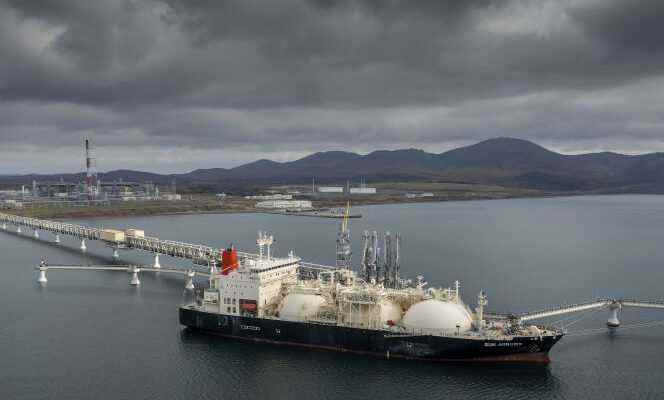Return of the rain, timid drop in temperatures: a certain relief roamed Japan on Monday July 4th. After two weeks of record high temperatures that pushed its power grids to their limits, warnings at the risk of a power shortage have been lifted. They could be relaunched after the decision taken on June 30 by Moscow to take full control of the Sakhalin-2 hydrocarbon exploitation project. Decided unilaterally, without compensation provided, the measure must result in the creation of a new Russian company, in place of the Sakhalin Energy Investment (SEI) consortium.
It targets Japan directly. Ten million tonnes of liquefied natural gas (LNG) leave each year from this gas site located on the island of Sakhalin, in the Russian Far East. Six million go to the Archipelago, which is equivalent to 9% of its LNG imports. SEI’s majority shareholder is the Russian giant Gazprom. The Anglo-Dutch Shell follows, with 27.5%, then the Japanese trading houses Mitsui & Co and Mitsubishi Corp, with 12.5% and 10%.
Russian terms
According to the decree signed by President Vladimir Putin, SEI’s foreign shareholders have one month to decide whether they want to take a stake in the new entity. If so, they will have to accept the Russian conditions. Otherwise, they will lose their investment. The announcement took Tokyo by surprise. Japan has imposed sanctions on Russia after the attack on Ukraine, but has always ruled out leaving Sakhalin-2, a project “extremely important for energy security” of the Archipelago, according to the Prime Minister, Fumio Kishida.
A remark that underlines the ancient importance of Sakhalin for Japan, due to its geographical proximity, a stone’s throw from Hokkaido, the large island in the north of Japan. Called Karafuto by the Japanese, Sakhalin was shared with Russia between 1855 and 1875 and then from 1905 to 1945. Its energy resources were quickly exploited: from 1919, the Japanese consortium Hokushinkai exploited oil discovered there in the 1880s.
Japan has been listed as an ‘unfriendly country’ by Russia
After 1945 and the takeover of Sakhalin by the USSR, cooperation quickly resumed. It accelerated during the oil shocks of the 1970s with the Japanese consortium Sodeco (Sakhalin Oil and Gas Development Company, 44% owned by the government). The economic sanctions imposed on the USSR by the United States interrupted it, but it restarted in the 1990s and led to the Sakhalin-1 oil projects, notably with Exxon, and Sakhalin-2. In 2006, Vladimir Putin stopped Sakhalin-2 for “environmental concerns”, quickly forgotten when the public group Gazprom obtains a majority stake in SEI. Since 2009, LNG has been exported to the Archipelago, South Korea and China.
You have 39.46% of this article left to read. The following is for subscribers only.
